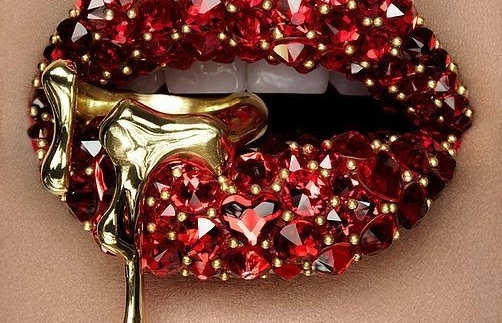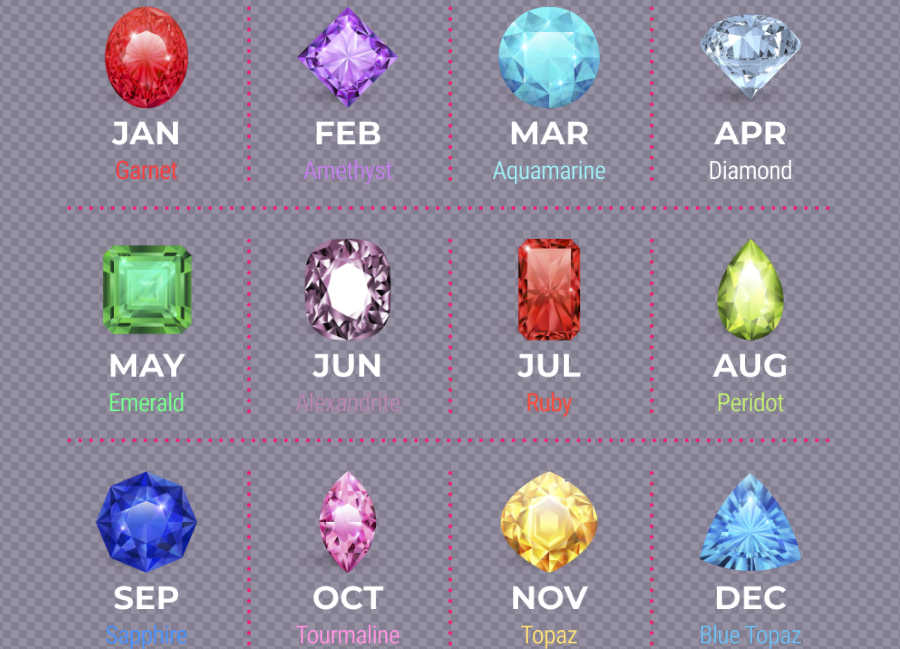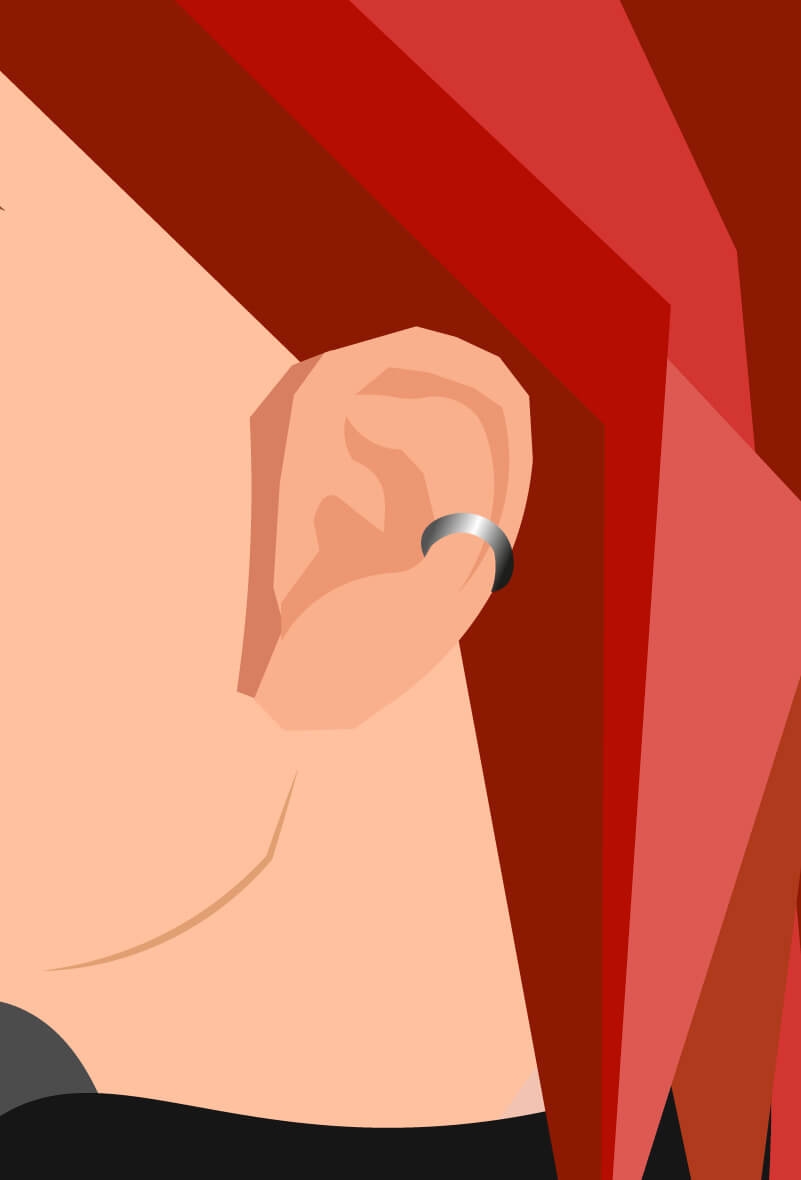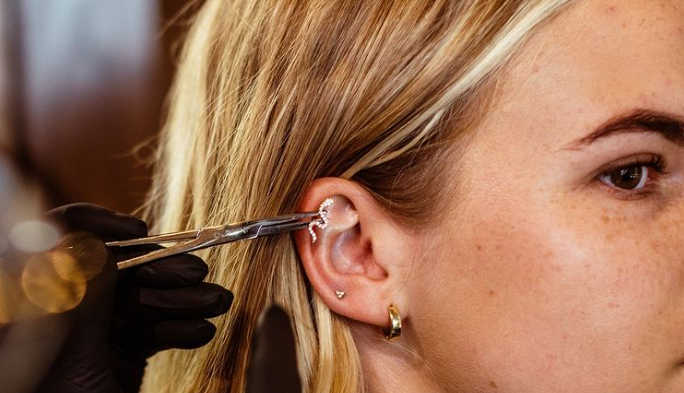Ruby Lore
Few other gems have as much myth, lore, and romance surrounding them as rubies. Over the centuries, many cultures have associated them symbolically with wealth and power. One of their chief attractions was the protection from misfortune and illness they supposedly afforded their lucky owners. As the science of gemology developed, many historically important rubies, such as the famed Black Prince’s Ruby of the British crown jewels, proved to be other red gems, most often red spinels. However, many famous, genuine rubies have fascinating histories, too.
In the past, cabbed blood-red gemstones were known collectively as “carbuncles.” Now, gemologists would distinguish these gems as distinct species, such as garnets, spinels, and rubies.
Ruby Rings Purchase Guide: Mens Ruby Rings, Ruby Rings For Women
What Is A Pure Ruby?
Identifying Characteristics
Overall color can often, but not always, offer a clue to a ruby’s origin. Stones from Myanmar tend to have purplish-red colors. Thai stones tend to appear more brownish-red.

Ruby Fluorescence
Rubies fluoresce in long or shortwave ultraviolet light. Gemologists can also often use this property to help identify a stone’s geographic origin. Myanmar rubies often fluoresce so strongly that the effect is noticeable even in sunlight. They literally seem to glow, and aficionados greatly admire them. Thai stones generally lack this property.
Asterism
Rubies, as well as sapphires, can display asterism, the “star effect,” due to rutile inclusions in their hexagonal crystal matrix. If this rutile is sufficiently abundant and precisely arranged, proper cabochon cutting can create star rubies. Today, there are heating and diffusion processes that can increase the rutile content and improve the star effect in such gems.
Inclusions
Inclusions can also help identify the source of a ruby. See our article on identifying the origins of rubies and sapphires for more information.
Synthetics
Lab-created ruby can be manufactured by several different methods, including flame fusion, the Czochralski process, flux, and hydrothermal. Corundum gemstones, both rubies and sapphires, were first synthesized in the late 19th century. In 1904, the French chemist Auguste Verneuil published his work on the flame fusion process, still known today as the Verneuil (vair-NAY) process. As a result, the production of synthetic rubies and sapphires skyrocketed. Many jewelers and gemologists have had the unpleasant task of telling the proud inheritors of treasured heirloom ruby rings or brooches that they contain flame fusion stones with more sentimental than commercial value. In recent years, researchers have developed more complex creative processes. These simulate natural formation conditions so closely that colors and even inclusions look extremely natural. Such stones are difficult for all but the most highly skilled professionals to identify as synthetic. See our articles on identifying synthetic gemstones and identifying inclusions found in synthetic gems for more information.
How Many Types of the Ruby Rings?
Ruby Sources
Although Asia has historically been the major producer of ruby gems, there are many other sources including the United States, Australia, and, most recently, Africa. Origin definitely affects the value of rubies. For more information on rubies from these and other parts of the world, see our article on identifying the origins of rubies and sapphires.
Myanmar
Stones from Myanmar generally command the highest prices. They have the coveted, near perfect coloring known as “pigeon’s blood red,” which is a very slightly purplish red with vivid saturation and dark tone. They also have extreme red fluorescence.
Mogok
A fabled deposit known for over 1,000 years, a mining tract in the Mogok region has been the primary source of gem-quality rubies. It’s home to some of the finest rubies ever found. The color of Mogok rubies often occurs in rich patches and swirls. (Color zoning can occur occasionally). Mogok rubies hold color in virtually any lighting condition, which contributes to the demand for these gem-quality stones. The shape of Mogok ruby rough generally yields well-proportioned stones. In addition to faceted stones, Mogok also produces the world’s finest star rubies.
Möng Hsu
Myanmar mapIn the late 1990s, gem-quality rubies began appearing in much more abundance from the Möng Hsu region of Myanmar. The rubies from Möng Hsu are a rich, fluorescent red and are easily distinguished by their dark core. These gems were often treated at very high temperatures to enhance their color.
While conventional heat treatment is an accepted practice in the trade, the level of heat applied to Möng Hsu rubies in order to enhance their color led to some controversy in the industry. Concerns were raised not only regarding heat treatment more generally but also over whether rubies from Möng Hsu should be distinguished from other Myanmar rubies. There’s still no agreement amongst the trade on this matter.
Nanyazeik
Rubies have started to come out of Nanyazeik in Myanmar’s Kachin State. It’s too soon to tell if Nanyazeik will become an important source.
Sri Lanka
Some of the world’s finest rubies have come from Sri Lanka’s gem gravels. Top-grade Sri Lankan reds are virtually indistinguishable from their Mogok brethren, but most tend towards purple or pink. As with Sri Lankan sapphires, color accumulates in large stones. Stones of five carats or more can be quite magnificent. Due to the bi-pyramidal shape of the rough, many stones are cut with overly deep pavilions. Sri Lankan ruby is strongly fluorescent, and asterism is common.
Thailand and Cambodia
The main attraction of ruby from Thailand and Cambodia is its high clarity, but the flat crystal shapes generally yield overly shallow stones. Due to a high iron content, which quenches fluorescence, most of these rubies tend to have a garnet-red color. These stones have a total lack of light-scattering silk inclusions, so star stones aren’t found here. (Although heat treatment does make improvements, it’s not enough).
In Thai/Cambodian rubies, only those facets where light is totally internally reflected will be a rich red. The others appear blackish, as in red garnets. Thai stones are actually less purple than most Myanmar rubies. However, Myanmar-type rubies appear red all over the stone. (A rich red is seen not only in the areas where total internal reflection occurs but also in other facets, due to the red fluorescence and light-scattering silk of Myanmar rubies). With the decline in Myanmar production during the 1962-1990 period, the market became conditioned to Thai/Cambodian rubies. Some people actually preferred them. Nevertheless, Thai/Cambodian rubies are acceptable only when good material from Myanmar-type sources isn’t available. Today, production from Thailand and Cambodia is negligible. Occasionally, one might hear statements about how Cambodian stones are superior to those from across the border in Thailand. However, bear in mind that the deposits are essentially one that straddles the border.
Madagascar
Known in olden times as the “Beryl Island,” Madagascar has long been considered a mineralogical paradise. It’s still known for its gem wealth and yields more than just beryl gemstones. Madagascar produces mainly fine blue and pink sapphires. However, two important ruby deposits have also been discovered. The first lies approximately 1030 km inland from the coastal town of Vatomandry. The second is roughly 4570 km from the town of Andilamena.
Vatomandry is said to produce better-quality material, lighter and brighter (more reminiscent of Myanmar), while the Andilamena material is somewhat darker and not as clean. Rutile silk seen in some pieces suggests that star stones may be forthcoming. Most stones from both deposits are heat-treated.
Kenya and Tanzania
Stones from Kenya and Tanzania are magnificent when clean, but facet-grade material is rare. Like Myanmar, much of this material is strongly fluorescent. These deposits have produced no star stones.
Beginning in the mid-1990s, mines near Songea began to produce material with a dark, garnet-like color veering towards orange. While this material is ruby of a sort, it’s marginal due to its high iron content. Tanzania is the principal source of anyolite (ruby-in-zoisite).
Mozambique
In 2009, rubies were discovered in Montepuez, Mozambique. This deposit is becoming an important source of rubies. The Montepuez rubies have colors that range from those of Myanmar stones to those of Thailand/Cambodia stones. They’re also available in a wide range of sizes, both treated and untreated.
Afghanistan
The Jegdalek deposit in Afghanistan has produced rubies that rank with fine Mogok stones, but facetable material is in short supply. Many of these stones contain small areas of blue color. They are also strongly fluorescent. (If this deposit ever produces clean material, the market will surely take notice). This deposit hasn’t produced star stones.
Nepal
Nepal is a relatively new source of rubies. A goat herder discovered ruby in the mountains in the 1980s. The clarity of Nepalese ruby is usually low to mid-commercial, although gemmy crystals do exist. Typically, Nepalese crystals weigh 5 carats or less and have heavy color zoning, from pure red to pinkish-purplish red.
Vietnam
Vietnam had significant discoveries north of Hanoi in 1983 and in Luc Yen in 1987. Between November 1989 and March 1990, one Vietnamese deposit produced more than 3 million carats of ruby and pink sapphire. Word spread quickly in the trade that the color of the finest material was comparable with that from Myanmar. However, unlike the Mogok material, the clarity of Vietnamese ruby is mostly lower, with few eye-clean gems. Like Afghanistan rubies, some Vietnamese rubies have small areas of blue color. The best Vietnamese ruby approaches fine Mogok, but, since the early 1990s, most have tended towards pink.

Ruby Trade Names
Please note, these are descriptive terms. You can’t always identify rubies by their color alone.
- African: usually orangish-red.
- Beef Blood: slightly darker than pigeon blood.
- Burma or Oriental: red to slightly purplish red in medium-dark tone with vivid saturation. (Also called “pigeon’s blood red”).
- Ceylon or Sri Lanka: lighter in tone, often more brilliant than Myanmar or Thai rubies.
- French or Cherry: slightly lighter than pigeon blood.
- Thai or Siamese: dark red to brownish or purplish-red.
The term “star ruby,” in addition to referring to rubies that display asterism, also refers to transparent red corundum too light or too purple to properly call ruby. In the 1950s, synthetic star corundum is known under the trade name “Linde Stars” enjoyed considerable popularity. Gems sold as “Serengeti Rubies,” “River Rubies,” and “Cape Rubies” may not be actual rubies. Learn more about these misleading names here and consult our List of False or Misleading Gemstone Names.
Ruby Enhancements
Rubies have a long history of enhancement. Unless the seller specifically states the stone is unheated, you should assume that some kind of heat treatment has been used. Usually, high-temperature heating and controlled cooling clarify the stones. This process dissolves silk (rutile inclusions) and can also improve color tone and saturation. Such treatments can only be detected in stones whose residual inclusions show signs of heat stress. Truly clean stones will give no clues, so their color can’t be verified as natural.
The general view at present seems to be that simple heating, being stable and indistinguishable from nature’s own healing processes, is acceptable as long as it’s disclosed. For this reason, heating doesn’t radically lower the value of ruby gems. However, this isn’t the case for other more recently invented treatments, such as diffusion coloring or filling with polymer and/or lead glass.
Ruby Jewelry Care
Corundum has a hardness second only to diamond among natural gems. Plus, it has no cleavage. These physical properties make ruby a superb jewelry stone. For rubies reasonably clear of inclusions or fractures, no special wear or care precautions are necessary. You can safely use a mechanical system to clean such stones, per the manufacturer’s instructions. On the other hand, heavily included or fractured rubies have less durability. Clean these by hand using only warm, soapy water and a soft brush.
Ruby and Sapphire Grading Tools
If you deal inexpensive gemstones, you should invest in some simple ruby and sapphire grading tools. To attract customers and keep them happy, you must be able to assure them of the authenticity of your gems and maintain a consistent grading scheme. Learn what you’ll need to evaluate and grade these popular stones.
Basic Tools for Identifying Natural Rubies and Sapphires
Before grading, make sure you’re dealing with natural, gem-quality corundum — rubies or sapphires — rather than lab-made material or entirely different gemstones. You’ll need some basic gemological equipment to measure the physical and optical properties of your gems.
A simple loupe is the best first tool to use when identifying gemstones. Look at the stone’s inclusions and growth planes. Are these consistent with natural corundum? A loupe can also help you determine if a gemstone has been faceted well. Although not a definitive test, synthetics or imitations typically don’t receive quality cuts.
A microscope can give you a closer look at the gem and its inclusions, helping you identify it. The next set of properties you’ll need to analyze in difficult separations are refractive index, specific gravity, and light absorption spectra. To measure these, you’ll need a refractometer, a modified or specialized balance or electronic scale, and a spectroscope. Make sure that all properties of your test stone are consistent with those of natural ruby or sapphire.
These tools, in particular loupes and microscopes, can also help you identify some common corundum treatments. They can even help detect if a ruby or sapphire is unheated — a very rare thing, indeed. However, be aware that some glass-ruby hybrids and glass clarity enhancements are difficult to distinguish with basic equipment.
Ruby and Sapphire Grading Tools
Once you’re sure you have a natural ruby or sapphire, you’ll want to grade it using the Four Cs: color, clarity, cut, and carat.
Ruby and Sapphire Color Grading
For a ruby or sapphire, color is by far the most important factor in its grade. You may want to use a master set of stones to help you determine the color. Apps like Gemewizard can also help. However, be careful about the color settings on your phone or monitor.
You can only determine color with your own eyes, but it still takes some expertise to accurately judge gemstone color. To better understand color, it’s best to separate it into hue, tone, and saturation.
For this, you’ll need a workspace with natural north light or adequate artificial lighting. Make sure that you consistently grade your wares under the same lighting conditions.
Hues are the basic colors of red, orange, yellow, green, blue, violet, and purple. Most gemstones have a primary and secondary hue. Some have more than one secondary hue. For ruby, the primary color must be red. If the primary color of a corundum gem is anything else, it’s a sapphire.
Next, describe the tone. This is typically on a scale of zero to ten, where zero represents the lightest, colorless gems and ten the darkest. If you decide a ruby’s tone is less than five, you may want to call it a pink sapphire instead.
Finally, describe the gem’s saturation or “intensity” on a scale of one to six, where the most highly saturated gems receive a six. Few gemstones can reach the highest “vivid” saturation, but exceptional rubies and sapphires can.
Ruby and Sapphire Clarity Grading
Unlike diamonds, colored gemstones don’t require magnification for assigning clarity grades. Top-clarity rubies and sapphires will be eye-clean, while lower grades will have small inclusions. The lowest grades will have noticeable inclusions that detract from the stone’s beauty.
Still, a loupe and a microscope can aid in clarity grading if you have trouble identifying clarity characteristics with your eyes alone.
Ruby and Sapphire Cut Grading
Rubies and sapphires often receive native cuts at the mine. Intended to preserve weight, these poor cuts can make the gems unattractive, so it’s important to accurately describe the cut quality. Expertly cut rubies and sapphires will show better colors and optical performance.
Again, the best ruby and sapphire grading tools are your eyes and perhaps a loupe. Check for symmetry, windowing, and extinction. Look out for bulging areas and a thick pavilion.
More Ruby and Sapphire Grading Tools
Of course, to measure a gem’s carat weight, you only need an accurate scale calibrated to measure small objects like gemstones.
An ultraviolet (UV) light can also be useful, since the chromium content in rubies causes fluorescence. It can also help you to identify glass-filled rubies.
Stone Sizes
- Cathedrale St. Guy (Prague): 250 carats.
- Narodni Museum (Prague): 27.11 carats (Mynamar).
- American Museum of Natural History (New York): 100 carats (de Long star ruby).
- British Museum of Natural History (London): ruby crystal of 690 grams (Myanmar).
- Smithsonian Institution (Washington, DC): 138.7-carat Rosser Reeves star ruby (red, Sri Lanka); 50.3-carat (violet-red star ruby, Sri Lanka); 33.8-carat (red star, Sri Lanka).
- Los Angeles County Museum (Los Angeles): Myanmar crystal, 196.1 carats.
- Iranian Crown Jewels: fine buckle of 84 Myanmar ruby cabs, up to 11-carat size.
- Historical rubies include: a 400-carat Myanmar rough that yielded 70 and 45 carat gems, a rough of 304 carats found about 1890, the Chhatrapati Manik ruby, and the 43-carat Peace Ruby.
Ten articles before and after
Adverse effects of Ruby Gemstone-People who shouldn’t wear Ruby
How Should I Choose A Ruby Engagement Ring To Propose?
Can I Propose With A Ruby Ring? Why Would I Choose A Ruby Ring To Propose?
A Guide To The Symbolism Of Jeweled Stones-How Do I Choose My Own Meaningful Jewelry Stones To Wear?
What do Ruby Rings Symbolize? What is July’s Birthstone?
A Ruby Ring Vs A Diamond Ring-Is Ruby Good For Engagement Ring?
White Gold Vs Yellow Gold Ring Settings Which One Looks Better With Ruby?
Gemstone And Rose Gold Ring Settings Match Best
Can Rubies Only Be Bright Red? Top 4 Famous Ruby Jewelry in the World
How To Choose Best Ruby Jewelry? What Should Be Done With Ruby Jewels?



